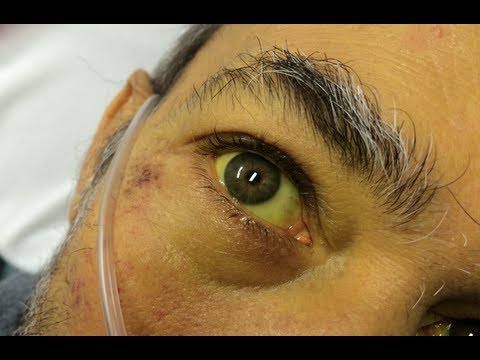Jaundice is caused by a build-up of a substance called bilirubin in the blood and tissues of the body.
Any condition that disrupts the movement of bilirubin from the blood to the liver and out of the body can cause jaundice.
Bilirubin
Bilirubin is a waste product created when red blood cells break down. It’s transported in the bloodstream to the liver, where it’s combined with a digestive fluid called bile.
This eventually passes out of the body in urine or stools. It’s bilirubin that gives urine its light yellow colour and stools their dark brown colour.
Types of jaundice
There are three types of jaundice, depending on what’s affecting the movement of bilirubin out of the body.
Pre-hepatic jaundice
Pre-hepatic jaundice occurs when a condition or infection speeds up the breakdown of red blood cells. This causes bilirubin levels in the blood to increase, triggering jaundice.
Causes of pre-hepatic jaundice include:
malaria – a blood-borne infection spread by mosquitoes
sickle cell anaemia – an inherited blood disorder where the red blood cells develop abnormally; it’s most common among black Caribbean, black African and black British people
thalassaemia – similar to sickle cell; it’s most common in people of Mediterranean, Middle Eastern and, in particular, South Asian descent
Crigler-Najjar syndrome – a genetic syndrome where an enzyme needed to help move bilirubin out of the blood and into the liver is missing
hereditary spherocytosis – a genetic condition that causes red blood cells to have a much shorter life span than normal
Intra-hepatic jaundice
Intra-hepatic jaundice happens when a problem in the liver – for example, damage due to infection or alcohol, disrupts the liver’s ability to process bilirubin.
Causes of intra-hepatic jaundice include:
the viral hepatitis group of infections – hepatitis A, hepatitis B and hepatitis C
alcoholic liver disease – where the liver is damaged as a result of drinking too much alcohol
leptospirosis – a bacterial infection that’s spread by animals, particularly rats
glandular fever – a viral infection caused by the Epstein-Barr virus
drug misuse – leading causes are ecstasy and overdoses of paracetamol
primary biliary cirrhosis – a rare condition that causes progressive liver damage
Gilbert’s syndrome – a common genetic syndrome where the liver has problems breaking down bilirubin at a normal rate
liver cancer – a rare and usually incurable cancer that develops inside the liver
exposure to substances known to be harmful to the liver – such as phenol (used in the manufacture of plastic) or carbon tetrachloride (widely used in the past in processes such as refrigeration, although now its use is strictly controlled)
autoimmune hepatitis – a rare condition where the immune system starts to attack the liver
primary sclerosing cholangitis – a rare type of liver disease that causes long-lasting (chronic) inflammation of the liver
Dubin-Johnson syndrome – a rare genetic syndrome where the liver is unable to move bilirubin out of the liver
Post-hepatic jaundice
Post-hepatic jaundice is triggered when the bile duct system is damaged, inflamed or obstructed, which results in the gallbladder being unable to move bile into the digestive system.
Causes of post-hepatic jaundice include:
gallstones – obstructing the bile duct system
gallbladder cancer or bile duct cancer
pancreatitis – inflammation of the pancreas, which can either be acute pancreatitis (lasting for a few days) or chronic pancreatitis (lasting for many years)
Some causes of jaundice are common, such as hepatitis and gallstones, whereas other causes, such as Crigler-Najjar syndrome and Dubin-Johnson syndrome, are much rarer.
